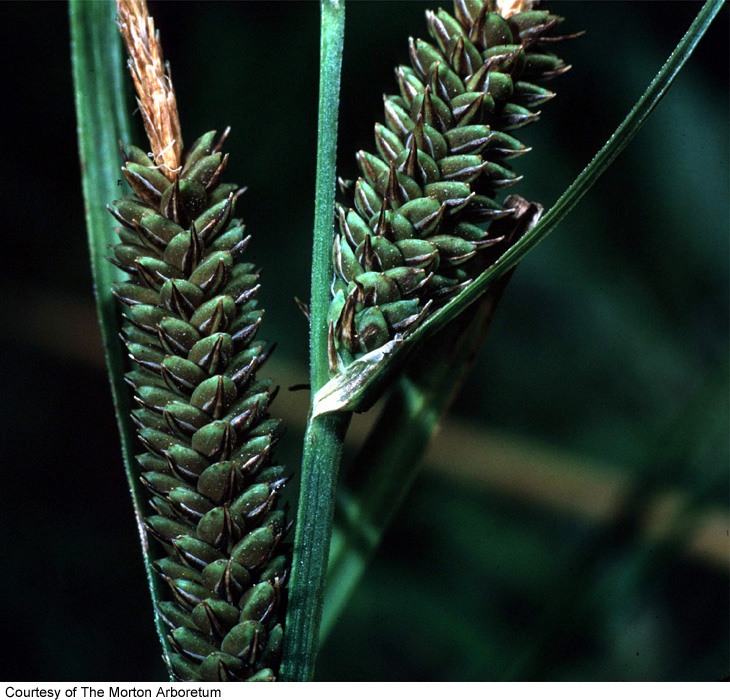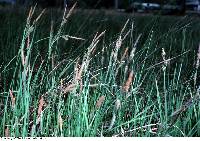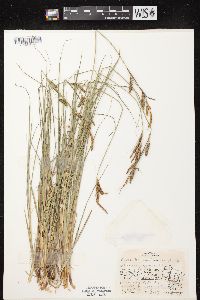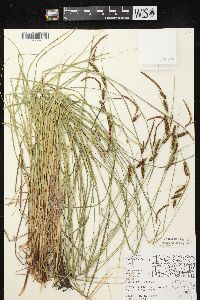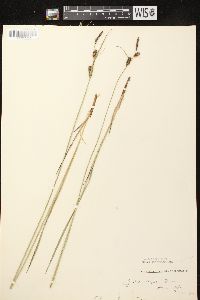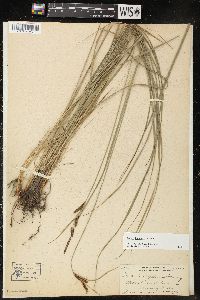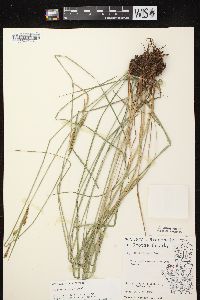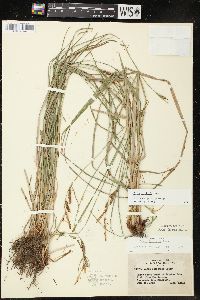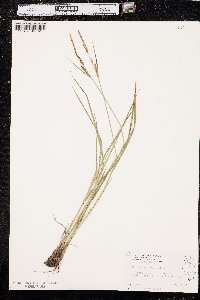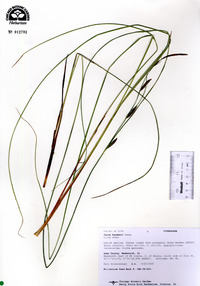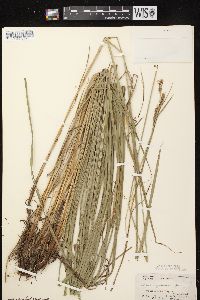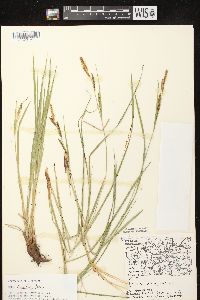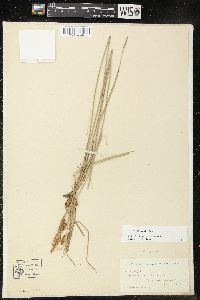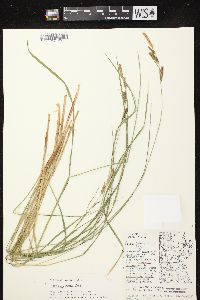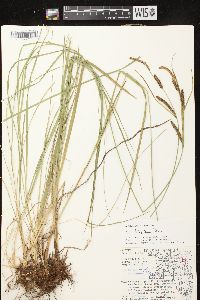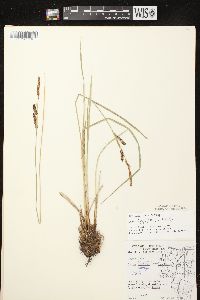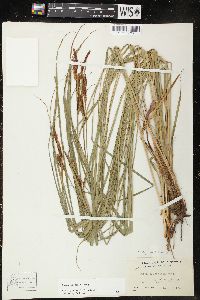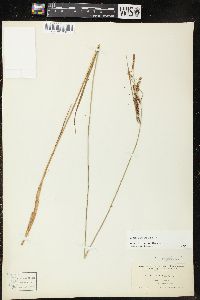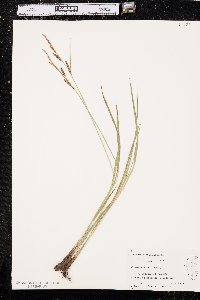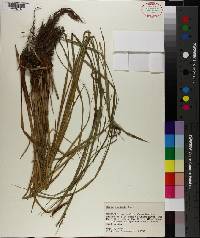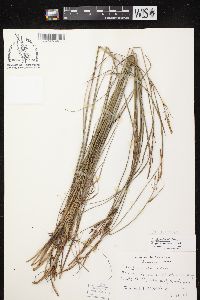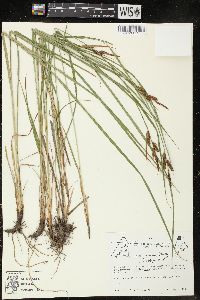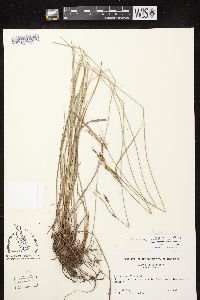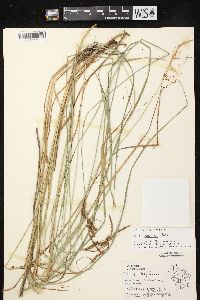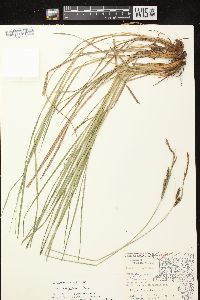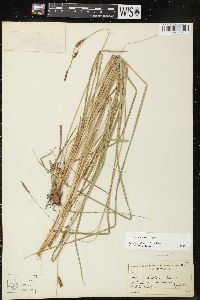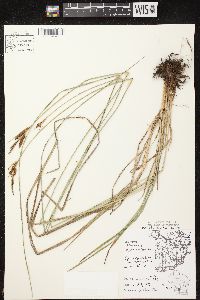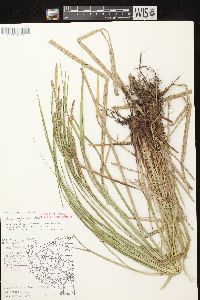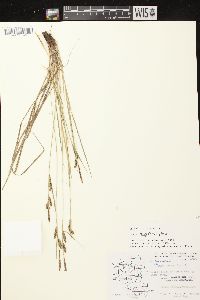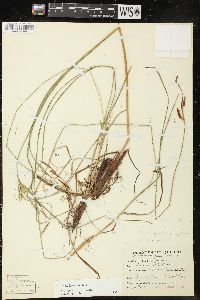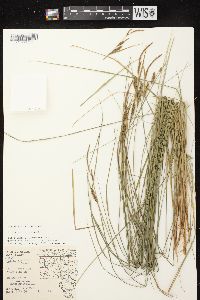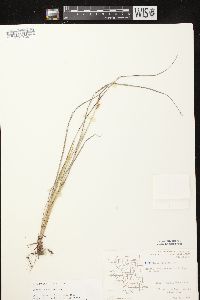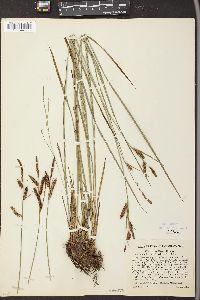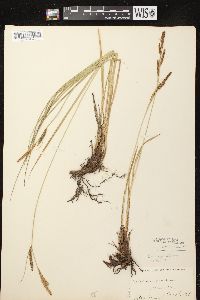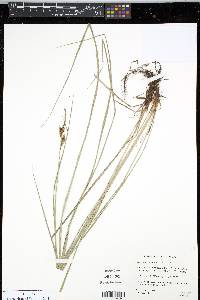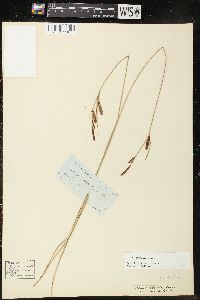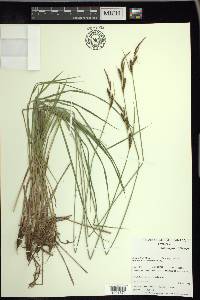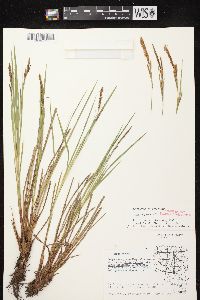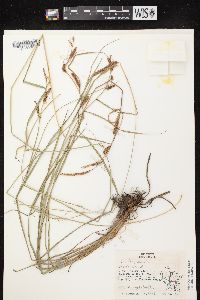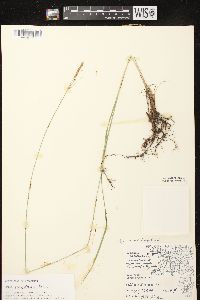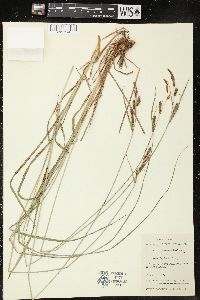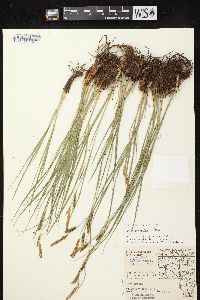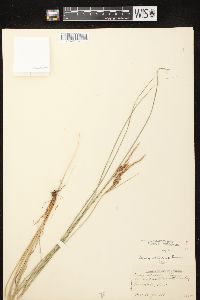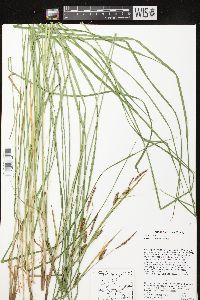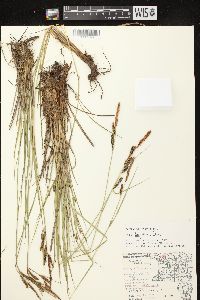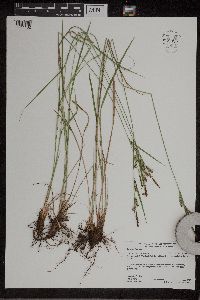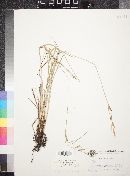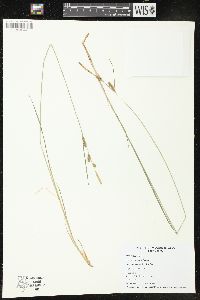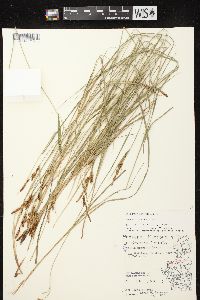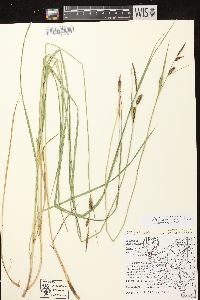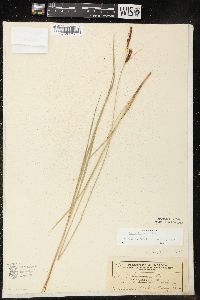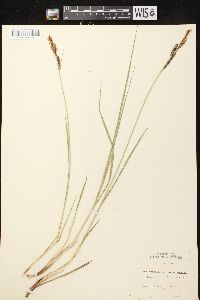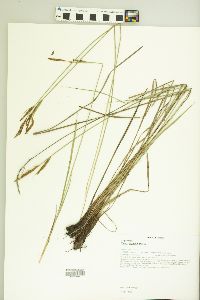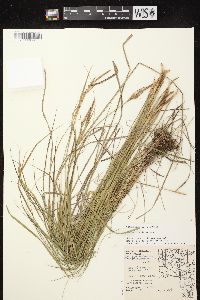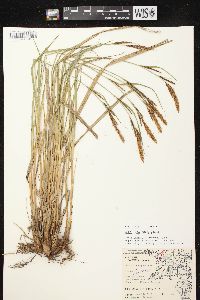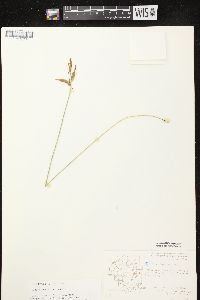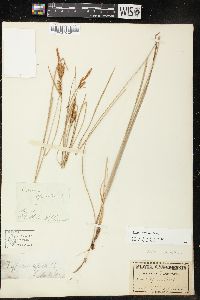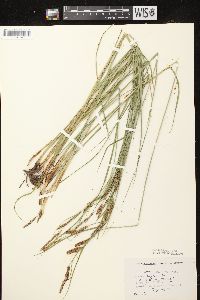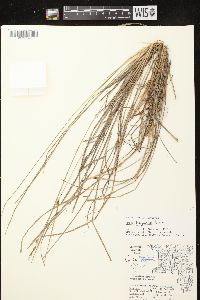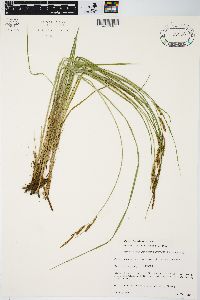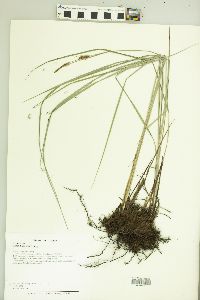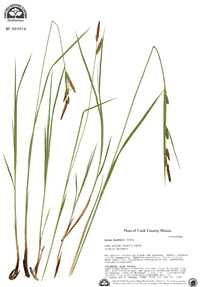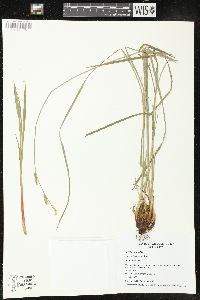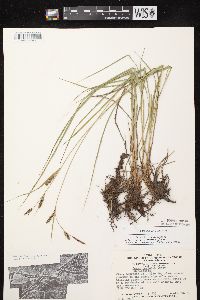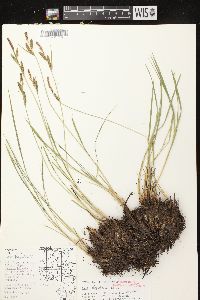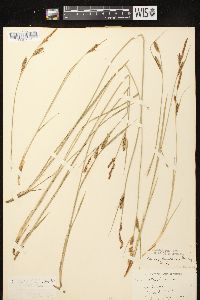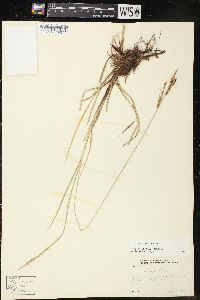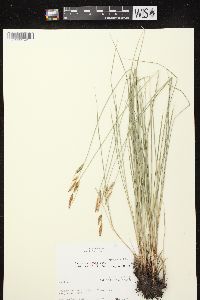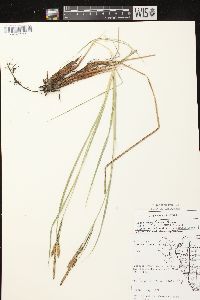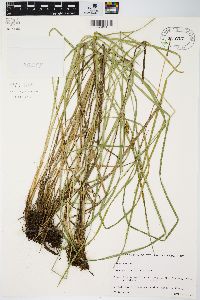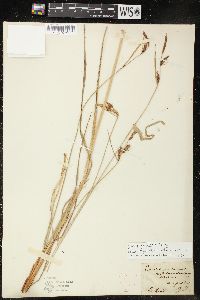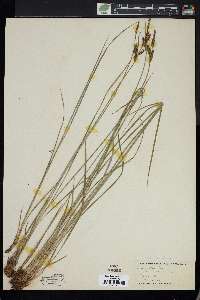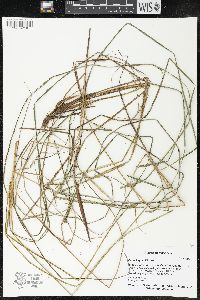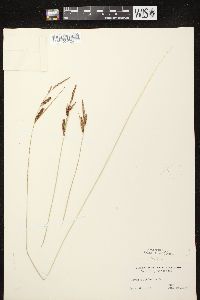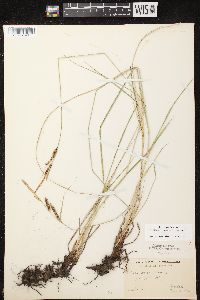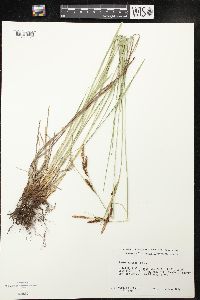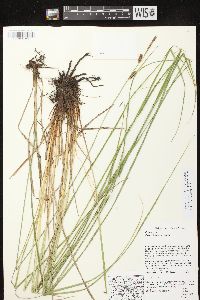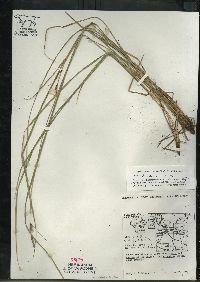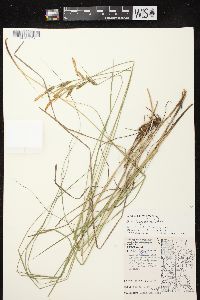Carex haydenii
|
|
|
|
Family: Cyperaceae
Cloud Sedge, more...Hayden's sedge
|
Plants cespitose. Culms acutely angled, 30-115 cm, scabrous. Leaves: basal sheaths red-brown, indistinctly ladder-fibrillose; sheaths of proximal leaves glabrous, fronts with red-brown spots, veinless, apex U-shaped; blades 3-5 mm wide. Inflorescences: proximal bract subequal to inflorescence, 2-4 mm wide. Spikes erect; proximal 2-3 spikes pistillate, 1-5 cm × 4-6 mm, base obtuse; terminal 1-2 spikes staminate. Pistillate scales red-brown, longer than perigynia, apex acute or acuminate, awnless. Perigynia divergent, olive-brown with red-brown spots on apical 1/2, veinless, inflated, loosely enclosing achenes, obovoid, 1.5-2.8 × 1.5-2 mm, dull, apex rounded, papillose; beak green, 0.1-0.2 mm. Achenes not constricted, glaucous. 2n = 54. Fruiting Jun-Aug. Wet meadows, moist prairies; 0-1,000 m; N.B., Ont., Que.; Ill., Ind., Iowa, Maine, Mass., Mich., Minn., Mo., Nebr., N.H., N.Y., N.Dak., Ohio, Pa., S.Dak., Vt., Wis. Carex haydenii is a species of seasonally saturated soils in open habitats. It appears to be declining in abundance with changes in land use. Carex haydenii is often confused with C. stricta; it can be identified by the inflated perigynia that are rounded apically, acute scales, and glabrous leaves and sheaths. Only basal sheaths of C. haydenii are ladder-fibrillose. Although often sympatric with C. stricta and C. nigra, no hybrids appear to be formed.
Plants tufted, the slender stems arising laterally, scabrous on the angles, 5-12 dm, usually much overtopping the lvs; lowest lvs reduced to dark reddish-brown, bladeless sheaths; main lvs 2-5 mm wide, inversely W-shaped in x-section, the sheaths glabrous, dorsally green, with a concave, red-dotted mouth; lowest bract lf-like, usually a little shorter than the infl, the others much reduced; staminate spikes 1-3, the terminal one 2-5 cm, the others much smaller; pistillate spikes 2 or 3, sessile or nearly so, erect, separate or somewhat overlapping, 1-5 cm, linear-cylindric, the uppermost with some distal staminate fls; pistillate scales with green midvein and dark brown sides, narrower than the perigynia, long-acuminate and projecting 0.5-1.5 mm beyond them; perigynia 1.5-2.6 mm, olive-green with red dots, biconvex, rounded-obovoid and slightly inflated, rounded above to a minute beak, with 1 or 2 faint nerves on each side; achene lenticular, loosely enveloped in the lower half of the perigynium; 2n=54. Marshes, wet meadows, and wet, open woods; N.B. to Minn. and S.D., s. to N.J., Pa., Ind., and Mo. Gleason, Henry A. & Cronquist, Arthur J. 1991. Manual of vascular plants of northeastern United States and adjacent Canada. lxxv + 910 pp. ©The New York Botanical Garden. All rights reserved. Used by permission. From Flora of Indiana (1940) by Charles C. Deam Infrequent in northwestern Indiana in wet prairies, ditches, and low clearings in open oak woods. ...... Indiana Coefficient of Conservatism: C = 8 Wetland Indicator Status: OBL |

